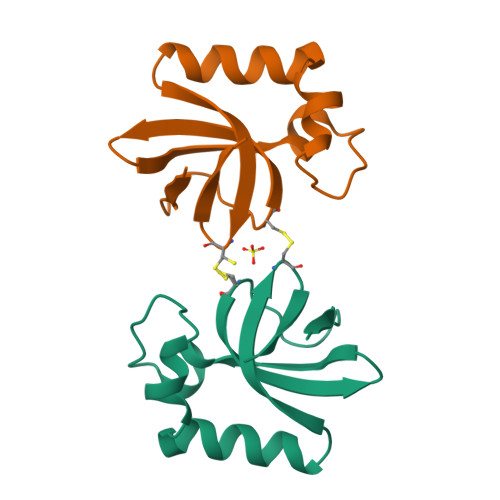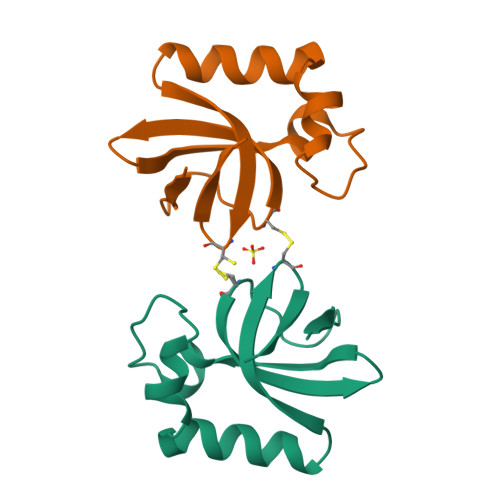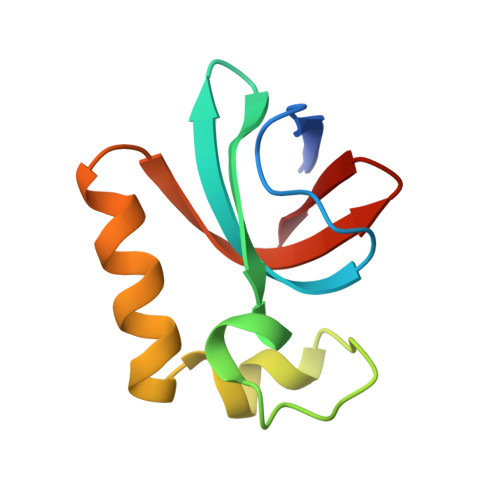A redox switch regulates the assembly and anti-CRISPR activity of AcrIIC1.
Zhao, Y., Hu, J., Yang, S.S., Zhong, J., Liu, J., Wang, S., Jiao, Y., Jiang, F., Zhai, R., Ren, B., Cong, H., Zhu, Y., Han, F., Zhang, J., Xu, Y., Huang, Z., Zhang, S., Yang, F.(2022) Nat Commun 13: 7071-7071
- PubMed: 36400778
- DOI: https://doi.org/10.1038/s41467-022-34551-8
- Primary Citation of Related Structures:
7X31, 7X4B - PubMed Abstract:
Anti-CRISPRs (Acrs) are natural inhibitors of bacteria's CRISPR-Cas systems, and have been developed as a safeguard to reduce the off-target effects of CRISPR gene-editing technology. Acrs can directly bind to CRISPR-Cas complexes and inhibit their activities. However, whether this process is under regulation in diverse eukaryotic cellular environments is poorly understood. In this work, we report the discovery of a redox switch for NmeAcrIIC1, which regulates NmeAcrIIC1's monomer-dimer interconversion and inhibitory activity on Cas9. Further structural studies reveal that a pair of conserved cysteines mediates the formation of inactive NmeAcrIIC1 dimer and directs the redox cycle. The redox switch also applies to the other two AcrIIC1 orthologs. Moreover, by replacing the redox-sensitive cysteines, we generated a robust AcrIIC1 variant that maintains potent inhibitory activity under various redox conditions. Our results reveal a redox-dependent regulation mechanism of Acr, and shed light on the design of superior Acr for CRISPR-Cas systems.
Organizational Affiliation:
School of Life Science and Technology, Harbin Institute of Technology, Harbin, 150080, China.



















